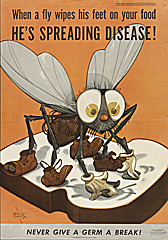Changing Exhibitions Program
On this page:
The Global Health Odyssey Museum will feature changing exhibits over the coming years to supplement our permanent installations. New changing exhibits are in the works, so please check back with us.
Consequential Matters
June 15 – September 11, 2009
This exhibition is an investigation by four Atlanta-based artists of the consequences of urbanization, technology, consumption, indulgence, and globalization.
Peter Essick – High Tech Trash
Mark Wentzel – XLounge X 3
Carl DiSalvo and Jonathan Lukens – Smog is Democratic

Photo © Peter Essick
Peter Essick: High-Tech Trash
For a January 2008 National Geographic article about the disposal of scrap electronics, Atlanta-based photojournalist Peter Essick traveled to Africa, Asia, Europe, and the United States. The global trade in “e-waste”—computers, cell-phones, and hard drives, to name a few—has developed exponentially over the past 20 years with resulting environmental and social concerns. This documentary essay bears witness to workers in developing countries who expose themselves to health risks as they pull apart monitors or circuit boards to extract copper, gold, silver or lead. Essick also chronicles more environmentally- responsible recycling programs in Europe, and questions some of our efforts here in the United States.
About the artist
From his home base in Stone Mountain, Georgia, Peter Essick has been traveling the world since the 1980s as a photojournalist for National Geographic magazine, documenting global environmental and ecological issues.
Above, right: Carcasses of outdated electronic products shipped from Europe and the US pile up in a lot behind a market in Accra, Ghana. Some of the better items are reused, but most are just dumped in Ghana after the copper wire is salvaged. Photo © Peter Essick

Mark Wentzel: XLounge x 3
XLounge x 3 is a series of cleverly-adapted Eames Lounge Chairs and Ottomans responding to the apparent consequences of the over-consumption of goods and materials of recent years. Designed in 1956 by the legendary American designers Charles and Ray Eames with mass production in mind, this iconic furniture has come to typify a particular standard for stylish and enduring design products. Artist Mark Wentzel invokes a more universal application in XLounge, alluding to topics of global obesity and consumption, and the potential cooperation among artists, designers, scientists and manufacturers to address such issues.
About the artist
Mark Wentzel is a conceptual sculptor who strives to solve critical contemporary problems using his art as a precise and productive agent for change. His installation at the Atlanta Contemporary Art Center in spring 2009-- Morale Hazard --addresses topics of energy, corporate motives and justice.

Carl DiSalvo and Jonathan Lukens: Smog is Democratic
Smog is Democratic explores particulate matter through the medium of visualization. As we inhabit and wear away at the city, we produce dust and debris. As plants attempt to reproduce, they release pollen. These and other processes create particulate matter, a residue of life. An investigation of particulate matter touches multiple concerns: pollution, the relationship between urban living and hygiene, the tension between scientific and artistic representations of information, and the desire to produce measurement techniques that gauge the threat of the unseen. This installation is interpretive and expressive, with the goal of considering how the sources and measurements of particulate matter might be rendered in order to generate reflection, discussion, and debate.
About the artists
Carl DiSalvo is an artist, designer, author, and educator. He is currently an Assistant Professor in The School of Literature, Communication and Culture at the Georgia Institute of Technology.
Jonathan Lukens is pursuing a PhD in digital media at Georgia Tech. Previously, he was an assistant professor of Graphic Design at Georgia State University.

When a fly wipes his feet on your food, he’s spreading disease!
War Department, U.S. Government Printing Office, United States
1944 Photomechanical print 36 x 51 cm.
Artist: Vernon Grant (1902-1990)
Photo: National Library of Medicine
An Iconography of Contagion: An Exhibition of 20th-Century Health Posters
September 28, 2009 - January 29, 2010
From the collection of the National Library of Medicine
Mike Sappol, Curator
This exhibition features more than 20 health posters from the 1920s to the 1990s, from North America, Europe, Asia, and Africa. It covers infectious diseases such as malaria, tuberculosis, AIDS, gonorrhea, and syphilis.
The posters show the interplay between public understanding of disease and social values. They reflect the fears and concerns of the time, and the state of medical knowledge. And they show how beautiful and entertaining images and designs were used to educate the public on matters of life and death.
This exhibition is sponsored by the Cultural Programs of the National Academy of Sciences. Additional support is provided by the Presidents’ Circle Communications Initiative of the National Academies.
Click here to download the exhibition catalogue: http://www.nasonline.org/site/DocServer/IofCBrochure06.pdf?docID=54381 ![]()
![]() Links to non-federal organizations are provided solely as a service to our users. These links do not constitute an endorsement of these organizations or their programs by CDC or the federal government, and none should be inferred. CDC is not responsible for the content of the individual organization Web pages found at these links.
Links to non-federal organizations are provided solely as a service to our users. These links do not constitute an endorsement of these organizations or their programs by CDC or the federal government, and none should be inferred. CDC is not responsible for the content of the individual organization Web pages found at these links.
